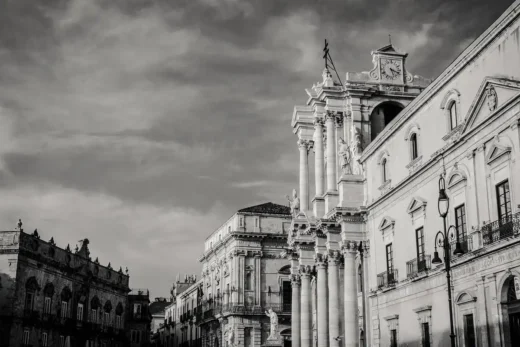Italian architecture travel and experience design, Italy buildings visits, Romantic tours
Reviving Romance Through Architecture: How Italy’s Spaces Shape Experiences
8 May 2025
Italy’s architecture has long been a global symbol of timeless beauty, cultural richness, and emotional resonance. From Roman ruins to Renaissance masterpieces, the built environment in Italy doesn’t just reflect history—it shapes how people experience love, connection, and the passage of time. In recent years, a new wave of travel experiences is tapping into this heritage, offering immersive ways to engage with architecture not only as a visual art, but as a stage for deeply personal moments.
One of the most intriguing developments in this space comes from ProposalItaly.com, a platform that curates unique romantic experiences throughout Italy. These are not traditional tours. Instead, they are carefully designed moments—marriage proposals in historic villas, private dinners on panoramic rooftops, or even symbolic weddings in ancient stone chapels—crafted to leverage architecture as the setting and co-creator of memory.
Emotions Engineered: The Architectural Backdrop of Romance
Architecture has always been about more than form and function. In Italy, buildings are imbued with symbolism and social meaning. The intimacy of a medieval alley in Siena, the grandeur of a Palladian villa in Veneto, or the soft decay of a coastal watchtower in Puglia—each of these spaces evokes a different emotional response. Italian architecture encourages slowness, awe, and reflection, making it fertile ground for experiences that matter.
ProposalItaly.com has mastered the art of connecting couples with these environments in authentic, respectful ways. Rather than staging generic, mass-produced events, the platform works with local architects, planners, and hosts to select locations that are both culturally significant and emotionally resonant. This approach elevates private moments—such as a proposal or anniversary—to something more poetic and place-based.
Preservation Meets Personalization
This trend also intersects with the growing emphasis on adaptive reuse in architecture—repurposing historical structures for contemporary uses. In Italy, where heritage preservation is a national priority, this blending of old and new can be a delicate task. Many of the venues featured on ProposalItaly.com are former monasteries, restored farmhouses, or once-abandoned villages brought back to life through minimal intervention and careful design.
These sites are not only beautiful; they tell stories. And in using them as the backdrop for key life events, travelers become part of those stories. It’s a subtle but important shift in tourism: one that favors depth over breadth, emotion over entertainment.
A great example of this balance between preservation and emotional design can be seen in the La Darbia Hotel, Orta San Giulio – Northern Italy, where architecture, nature, and hospitality coexist in harmony.
A Broader Shift in Travel and Experience Design
This architecture-driven experience model aligns with several broader movements in tourism and design. Slow tourism, for example, emphasizes deeper engagement with fewer places, prioritizing local culture and sustainability. Meanwhile, the rise of experiential travel has shown that visitors increasingly seek meaning, not just convenience.
The architecture sector plays a critical role in facilitating these experiences. Designers today are often asked not just to restore a space, but to consider its emotional affordances: how it will feel, how it will photograph, and how it will be remembered. In this sense, architecture becomes both infrastructure and narrative.
According to Wikipedia’s definition of architecture, the field “encompasses the design and construction of buildings, but also their functionality, aesthetics, and relationship to the surrounding environment.” Today, that relationship also includes memory, ritual, and intimacy.
Design as Memory Architecture
One often-overlooked aspect of architecture is its power to encode and preserve memories—not only for societies, but for individuals. A particular archway, staircase, or stone courtyard can become a trigger for deeply personal recollections. For couples engaging in experiences curated by ProposalItaly.com, these spaces often take on symbolic meaning, becoming part of their shared story. This is where architecture transcends utility and becomes emotional infrastructure: something that doesn’t just shelter life, but shapes it.
Why This Matters: Reclaiming Meaning in the Built World
In an age of hyper-connectivity and visual overload, the ability of a single space to anchor emotion is more powerful than ever. Italy’s architectural legacy is not just a backdrop for photos—it is a stage on which people live out moments that become lifelong memories.
Platforms like ProposalItaly.com don’t just offer services—they curate context. By selecting architecturally rich locations and blending them with storytelling, they demonstrate how design and place can deepen human experience. It’s a model that could inspire similar innovations in heritage tourism, event planning, and architectural consulting.
Comments on this guide to Italian architecture travel and experience design article are welcome.
Italy Architectural Designs
Italian Architecture Designs – chronological list
Italian Properties
Find the perfect luxury holiday property in Italy
Buying a house in Italy? Property guide
Foreigner’s guide to buying property in Italy
Comments / photos for the Italian architecture travel and experience design page welcome.






